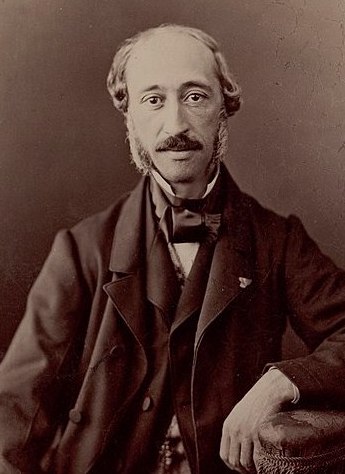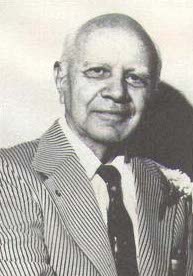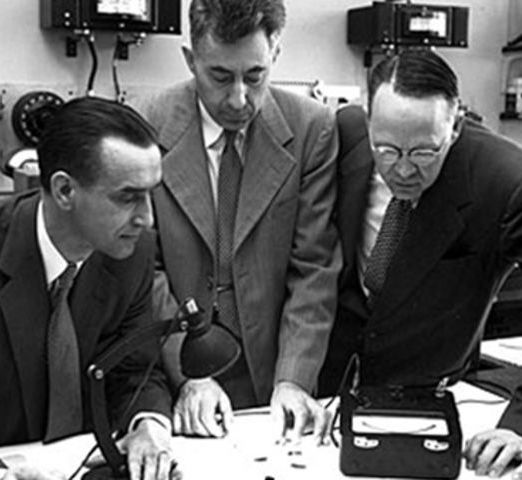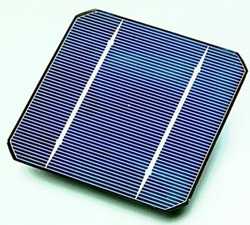The history of solar panels goes back further than you might think. In fact, if it wasn’t for a French teenager back in the 1800s, solar panels might never have been invented. More on that later.
The solar panel saga features brilliant scientific discoveries that date back more than a century. Like it or not, credit also needs to go to governments around the world. Without the support of politicians at some crucial moments, solar power might never have made it to the mainstream. Hooray government!
Although the history of solar power is an interesting story, it can also get a little complicated. As we mentioned, numerous innovators contributed over a long period of time. There are also a number of innovations that disappeared for decades, only to return to play a vital role in solar energy’s development. This can make for a story that’s a little difficult to follow.
To keep things simple we will focus on solar panels specifically and not solar power in general. What’s the difference? Solar power includes applications like passive solar power, solar hot water tanks, and concentrating solar power. Some of these technologies actually date back thousands of years. We’re not going to concern ourselves with those uses of solar energy today, however.
Instead, we’re going to focus on the incredible history of solar electric panels. These panels (also known as ‘photovoltaic panels’) are the ones that you see on most rooftops. They take the light of the sun and turn it into electricity. The development of these panels is a fascinating story that begins in the 1800’s. And yes, it’s finally time to get back to that French teenager we mentioned earlier.
The Father of Solar Electricity

The year was 1839 and a nineteen year old French boy by the name of Edmond Becquerel was experimenting in his father’s lab. Becquerel had a brilliant hunch that if he shone a light on an electrode that was submerged in a conductive solution it would create an electric current.
Edmond was an industrious young fellow, so he got to work. His first step involved setting up an electrolytic cell consisting of two metal electrodes placed in an electricity-conducting solution. When Becquerel exposed the electrodes to light there was an increase in the generation of electricity. Eureka!
This result may not sound too impressive, but Becquerel had actually discovered the photovoltaic effect (also known as the ‘Becquerel Effect’). This is the physical process through which a solar cell converts sunlight into electricity. In other words, this French teenager had just discovered solar electricity.
Despite further experimentation, however, Becquerel was unable to make his solar cell efficient enough to actually power anything. It would actually take over a century before solar panels would become a practical source of power. The next step on that long road involved a bar of selenium and a man named Willoughby.
Selenium Saves Solar

Willoughby Smith was an English electrical engineer. His main work involved developing telegraph cables. What do telegraph cables have to do with the history of solar panels? Well, it turns out that Willoughby’s work involved the use of selenium and he noticed something interesting: Selenium’s electrical conductivity increased when exposed to light.
Smith published an article “Effect of Light on Selenium during the passage of an Electric Current” in 1873 that outlined his findings. This article hinted at the possibility of harnessing the sun’s energy which intrigued a number of scientists. This included a couple of Brits who would take Smith’s discovery and run with it.
William Grylls Adams and Richard Evans Day read Willoughby Smith’s article and decided that the effect of light on selenium merited more attention. Adams and Day hit the mother lode in 1876 when they discovered that illuminating a junction between selenium and platinum created a photovoltaic effect. In other words, they showed that selenium produces electricity when exposed to light.
This development from Adams and Day was nothing less than the discovery of the photovoltaic effect in a solid material. It proved that light could generate an electric current in a solid material with no moving parts. This was the ‘missing link’ that would get us from the electricity-conducting solution of Edmond Becquerel to the solar panels of today. But before we get to our modern solar panels, we need to take a look at a much more primitive solar panel.
The Invention of the Solar Panel

At this point our story moves stateside to the New York City rooftop of Charles Fritts. It was on Charles’ rooftop in 1883 that the selenium work of Adams and Day was taken to the next level. This was when Charles created the first solid-state photovoltaic cell (AKA ‘the first true solar cell’) by coating selenium with a thin layer of gold to form the junctions. The selenium module that Fritts created produced a ‘continuous, constant’ electric current when exposed to light.
That’s right, the solar panel had finally been invented! Also, since it was installed on a rooftop, Charles’ solar project became the world’s first rooftop solar installation. What could possibly keep this invention from immediately powering homes all over the world? The limitations of selenium, unfortunately.
The properties of selenium meant that Charles’ solar cells only had an efficiency of about 1% (for comparison, modern solar cells have reached efficiencies of over 40%). This low efficiency meant that these solar cells couldn’t actually be used as an energy supply. This was a giant step, nevertheless, and it brought the dream of a solar power future much closer. Taking the next step in the history of solar panels would require leaving selenium behind.
From Selenium to Silicon

After a stint in the army and jobs at Westinghouse and AT&T, Russell Ohl found employment at Bell Labs in New Jersey. The year was 1927 and Russell was a radio researcher looking for a new form of receiver that would improve on the use of vacuum tubes. This led to Ohl working with what are now known as semiconductors (including silicon).
In 1940 Ohl noticed something interesting when working with a cracked piece of silicon. A significant current flowed between the two sides of the silicon when it was exposed to light. Ohl and his colleagues at Bell Labs didn’t understand why this was happening but they were intrigued.
Further experimentation led the researchers to discover that each side of the cracked piece of silicon had different impurities. The key was that one side of the silicon had too many electrons and the other side didn’t have enough electrons. The electrons were given an energy boost when exposed to light. This caused electrons on one side to cross the junction to the other side and create an electric current.
How important was this development? Well, solar panels hadn’t really progressed for decades due to the limitations of selenium. That wasn’t going to be a problem anymore. Thanks to Ohl’s work, the silicon solar cell would make solar panels efficient enough to actually act as a power source. But it would take some of Russell’s colleagues at Bell Labs to actually get us to that point.
Putting Solar Panels To Work

In 1952 Bell Labs asked Daryl Chapin to find a new power source for remote telephone equipment. He thought that solar cells might fit the bill. The problem was that a 6% efficiency would be required and silicon solar cell efficiency hadn’t improved much since Russell Ohl’s discovery in 1940.
Daryl brought his friend and colleague Gerald Pearson on board to help with the challenge. At the time, Gerald was working with Calvin Fuller on semiconductor research. Fuller was a chemist with expertise in introducing impurities to silicon. As you may recall from Ohl’s work, it is the impurities in silicon that are integral to improving its electrical conductivity.
Pearson gave Fuller a piece of silicon to work with and Fuller was able to create positively and negatively charged areas of the silicon through the use of gallium and lithium. This resulted in a solar cell that was superior to any other available at the time. In fact, Chapin figured that this cell could potentially achieve 23% efficiency.
As we’ve seen throughout the history of solar panels, however, the devil is in the details. In this case making electrical contact to the silicon proved problematic. The eventual solution involved using long, narrow strips of silicon and adding arsenic and boron. Once Fuller hit on this solution the team was able to achieve the efficiency goal that would allow the cells to power remote phone equipment.
The New York Times summed up Chapin, Fuller, and Pearson’s accomplishment on April 26, 1954. The paper noted that this marked “the beginning of a new era, leading eventually to the realization of one of mankind’s most cherished dreams—the harnessing of the almost limitless energy of the sun for the uses of civilization.”
Not too shabby. But as for the 23% solar cell efficiency that Chapin predicted, that was going to take a while. And getting there would take the support (and spending power) of the US military.
From Solar Toys to the Space Race

The employees at Bell Labs had taken the solar cell to new heights. Now all they needed were commercial applications that would bring solar power into the mainstream (and make the company a lot of money in the process). Unfortunately solar panels were still cost-prohibitive.
In 1956 a one watt solar cell cost $300 while a traditional power plant had a price tag of about 50¢ per watt. This meant that no serious use of the technology made financial sense. Therefore solar cells were relegated to powering toy subs and model airplanes. Could the solar cell really be doomed by its hefty price tag?
Thankfully not. It turns out the Cold War was going on at the time and satellites were the new surveillance tool. These satellites still required a reliable power source, however. Can you see how this might affect solar panel history? That’s right, regular civilians looked at the $300 per watt cost of the solar cell and said ‘No thank you’. The US Government, however, just said ‘Where did I put my checkbook?’
This was a turning point in the history of solar panels. The technology developed under the guiding hand of the military industrial complex until, by the late 1960’s, solar cells became the accepted power source for satellites. Accessible solar electricity on earth seemed as distant as ever, however. This wouldn’t change until someone found a way to drastically reduce the cost of solar power.
Making Solar Power Accessible to Everyone

In 1970 a photochemist named Dr. Elliot Berman dreamed of building a solar panel that would make economic sense here on earth. He approached a company that he thought would be the perfect partner in his quest for a sustainable energy future. That company? Exxon. Had Dr. Berman lost his marbles?
Actually, it turned out that he was just a man with impeccable timing. Exxon had concerns about the future of the oil business and was looking for ways to diversify with ‘nonconventional energy’. Solar power still cost over $100 per watt, however, and Berman knew that he would need to drastically reduce this amount to make solar a feasible option.
Berman discovered that he could reduce costs by obtaining silicon castoffs from the semiconductor industry. Imperfect silicon wasn’t suitable for electronics, but it worked just fine for solar panels. This brought costs down and made solar feasible for many applications, including lighthouses, microwave repeaters, and water pumps.
Higher Efficiencies, Lower Costs, and Greater Uptake
The rest of the 1970s saw continued increases in solar cell efficiency and further reductions in costs. The US government also demonstrated their support of solar energy through the establishment of the U.S. Solar Energy Research Institute (now the NREL) in 1977.
Solar panel cost reductions continued in the 1980s and 1990s as countries like Germany and Japan instituted ‘solar roofs’ programs. These programs provided subsidies for people to install solar panels on their homes. This not only made solar power more affordable but also raised awareness of solar energy among the general public.
The 2000s and 2010s saw more government support of solar with the establishment of programs like the Investment Tax Credit and the California Solar Initiative. This support contributed to a dramatic increase in the number of solar panels being installed and resulted in an ‘economy of scale’ that reduced solar module prices to $0.38 per watt!
It’s been a long road, but it is safe to say that solar energy has finally achieved mainstream acceptance. Solar power is the fastest growing renewable energy and solar panels now make financial sense for most households. Of course, none of these successes would have been possible if it wasn’t for the dedicated scientists and visionaries at work throughout the centuries-long history of solar panels.
(To learn about the history of other solar power technologies, check out our page on the history of solar power.)
